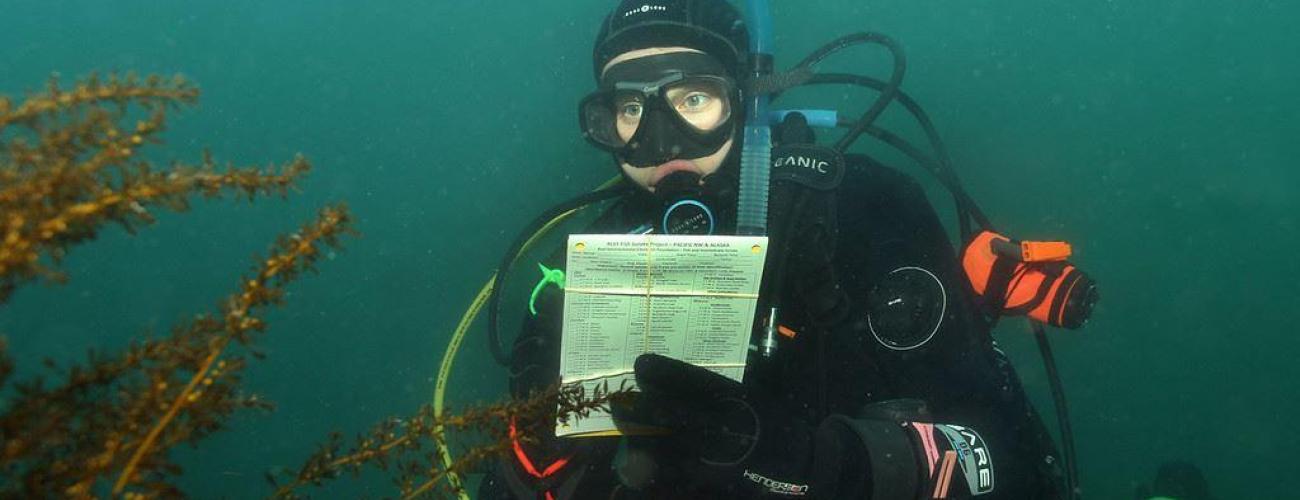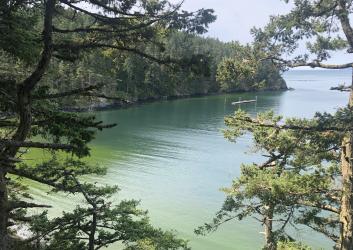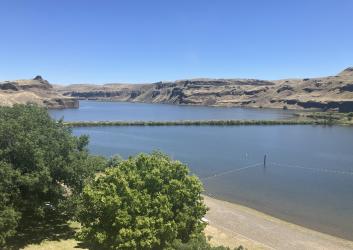Taking the plunge: Cold water diving at state parks
Photo by Janna Nichols.
Have you stood at the water's edge and wondered what lies beneath the surface?
Ever wish you could just keep on walking until the surface world slips away, and the watery wilderness below slides into view?
You can do just that from several of your state parks on Washington's western, island and Sound shorelines! Diving is a year-round sport in Washington. Now is the perfect time to give diving a try!
Cold weather scuba diving is popular in the Northwest, and our western Washington waters are among the premier places to dive in the country, says Mike Racine, a western Washington diving enthusiast. Undersea life in our region is vibrant and beautiful — a rarely seen scape of infinite wonder and mystery.
Diving during the colder months can offer improved visibility There's less sunlight, which means lower production of plankton to cloud the water.
Like wildlife? You might swim by giant Pacific octopuses, wolf eels and colorful nudibranchs. You can see a variety of crabs, flashy striped perch and large bottomfish, such as lingcod and cabezon. From rocky reefs to wrecks, there's almost no end to what you'll find beneath the surface.
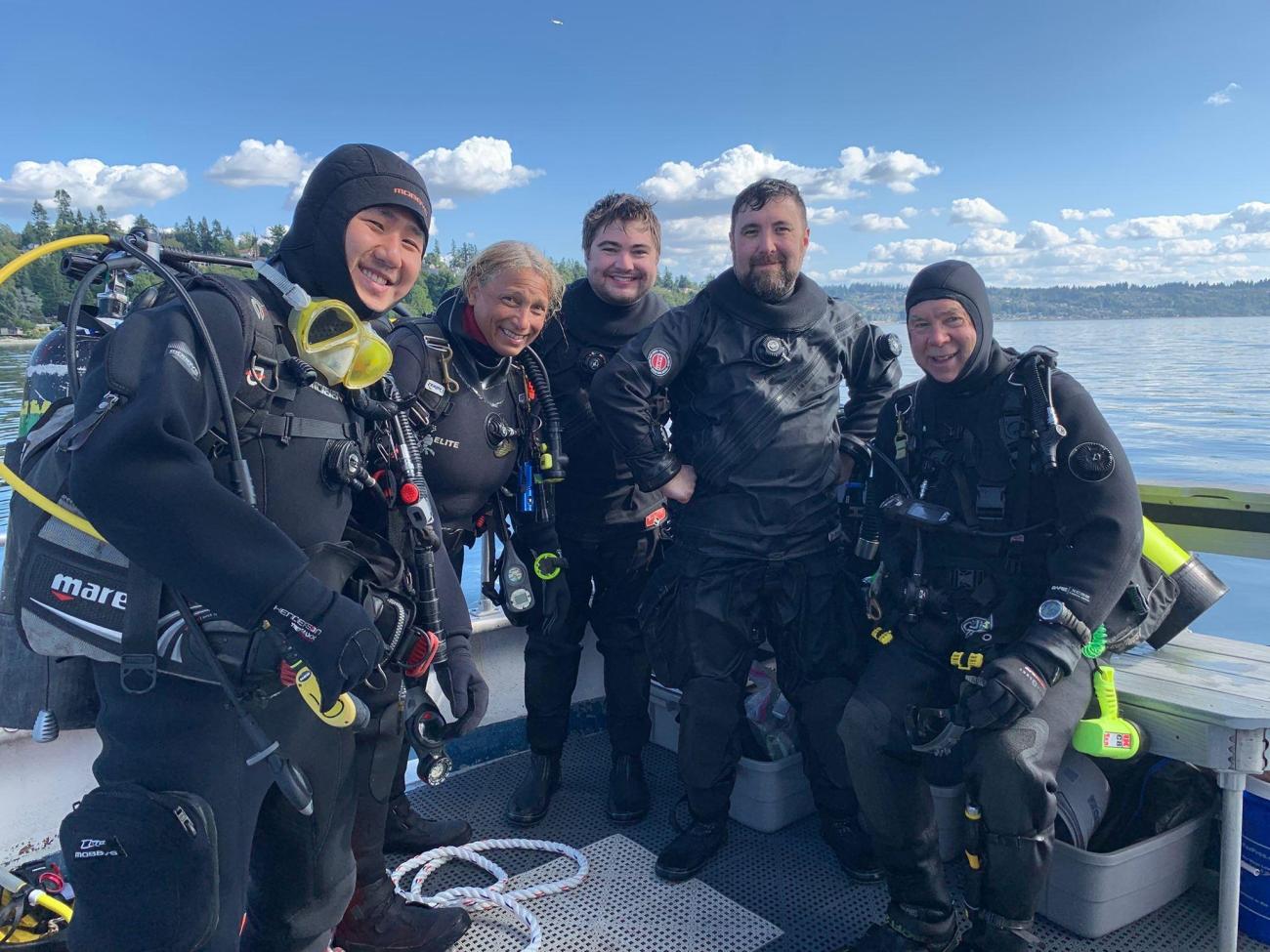
Ready to give this exciting sport a try? Diving can be an expensive endeavor. But we've gathered some pro tips for diving into diving without depleting your pocketbook – and staying safe!
💧 Get certified All divers MUST take a basic open-water certification course before diving. Most dive shops have classes, or you can search online for an instructor in your area. You will not be able to rent equipment without your certification card.
💧 It's cold out there At bare minimum, you will need a full wetsuit at least 14 millimeters thick that covers the entire body, says Janna Nichols, an avid diver and Citizen Science Program Manager at Reef Environmental Education Foundation (REEF). Nichols strongly recommends Washington divers also invest in a dry suit.
💧 Rent equipment
You may need to buy some equipment, such as your hood, mask and fins. However, you can rent some necessities from dive shops until you are certain you want to invest.
💧 Don't forget your swim friends!
ALWAYS dive with a buddy. Start with easy shore dives as you get used to the sport. Go with a friend who has been on at least a few more dives than you, or join one of the many local area dive clubs that organize group dives.
💧 Know the conditions
An informed diver is a safe diver! Check the currents and tides. Check online for information about the site and/or ask other divers about the dive you are interested in.
You are entering a beautiful and otherworldly environment,” Racine says. “In some ways, it's the closest thing you will ever experience to being an astronaut. But you are entering the environment on life-support equipment. You can never take that for granted!
Travel tip: Just as in any Washington state park, NEVER touch the animals. Additionally, sea creatures are more easily damaged by handling. Take a tip from the professionals and “take only pictures; leave only bubbles!”
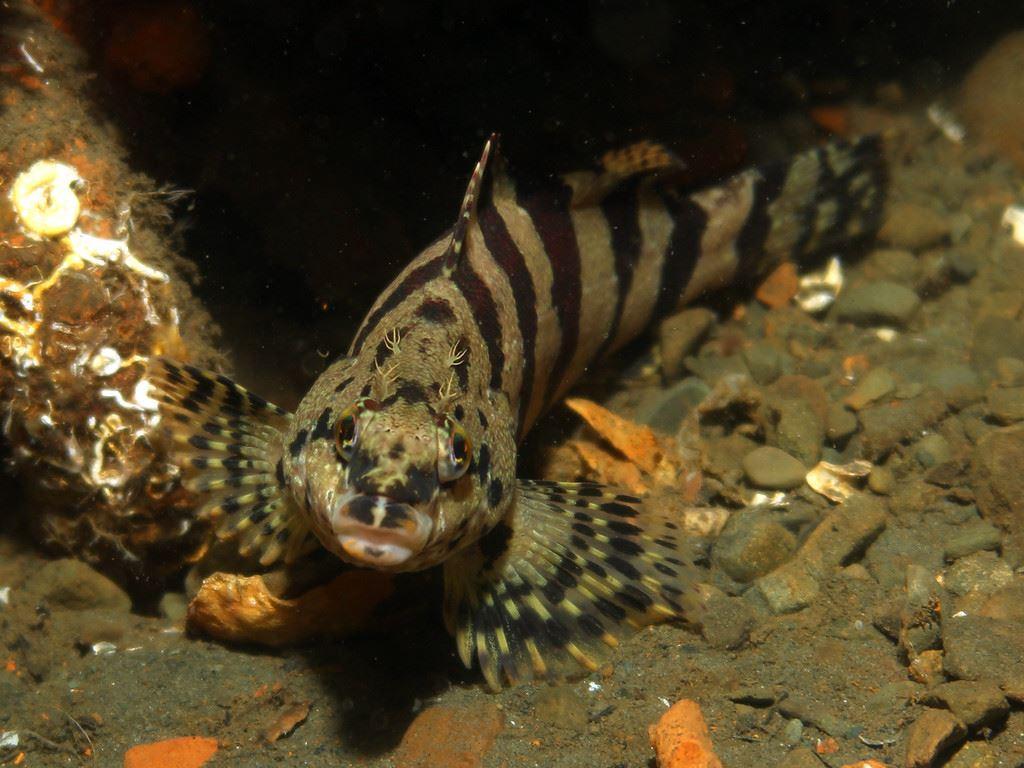
Puget Sound and Hood Canal offer plenty of options for beginning divers, with many of them at Washington state parks! Looking for the perfect parks to try this? Here are a few!
Saltwater State Park
A man-made rocky reef consisting of very large piles of quarried granite make Saltwater State Park a popular dive site. The reef is home to a profusion of fish, such as rockfish, large lingcod and wolf eels (which are fish and not true eels) and invertebrates, such as anemones, jellyfish, crab, urchin and the giant Pacific octopus.
Saltwater is accessed by shore or by boat. The site does have current, so beginning divers are cautioned to check the tide/current tables and plan dives around slack tide.
Dive rating: Beginning through advanced.
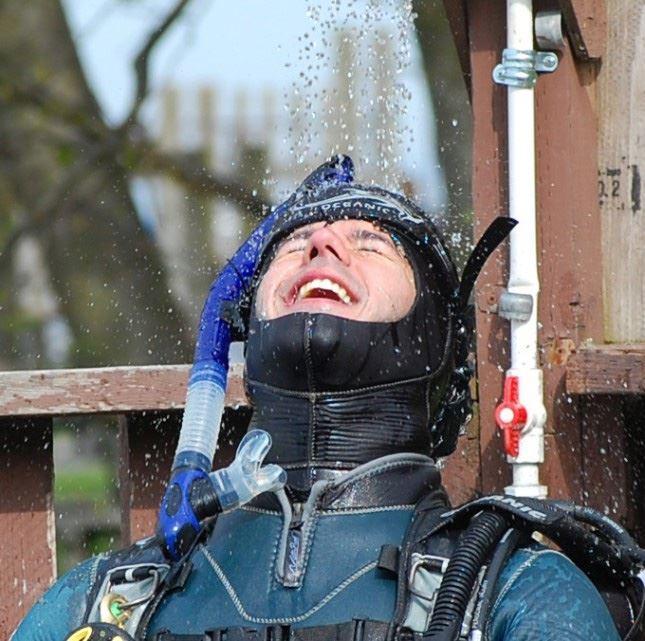
Fort Casey Historical State Park
The diving at Fort Casey is centered around the jetty that protects the Coupeville Ferry Terminal and pilings covered with brightly colored invertebrates. The jetty consists of large quarry rock which is home to a variety of colorful marine life. Fort Casey is considered one of the best shore dive sites in the state.
The current at this site can be intense! Make sure to check the tide/current tables, and dive on the slack tide. Divers are cautioned to be wary of the ferry channel and not go past the end of the jetty!
Dive rating: Beginning through advanced.
Twanoh State Park
Often calm Hood Canal waters and a gently sloping bottom make Twanoh a great spot for beginners! You can walk in anywhere along the shoreline, but for the best diving try heading east, which is to the right of the parking lot as you face the water. The busy boat launch on the west end is best avoided. There is no reef here, but among the eelgrass beds you can spot moon snails, sea pens and perch. Tube anemones, starfish and sea cucumbers also share these waters.
Dive rating: Beginning through advanced.
Fort Worden Historical State Park
The Port Townsend Marine Science Center's wharf is the ideal entry point for your dive at this shallow and easily accessible shore dive. The wharf's pilings are covered with plumose anemones, and the shell-littered bottom is teeming with life! You may run into octopuses, wolf eels, seastars, sponges and lots of shrimp! Experienced divers caution about the currents at Fort Worden, but you can drift from one end of the beach to the other, and it's a pretty safe dive.
Dive rating: Beginning through advanced.
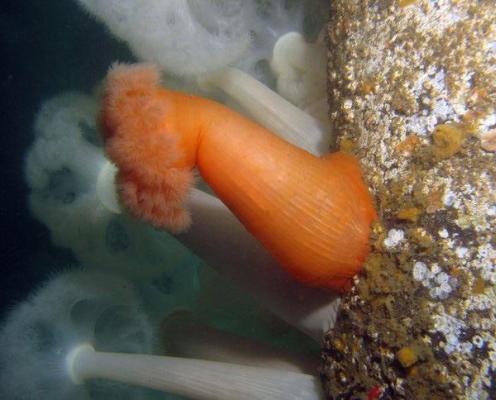
There is so much to discover under the water. Check out this footage from a late-winter dive at Saltwater State Park!
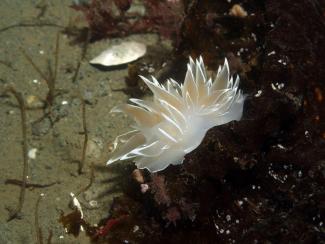
💧 Don't forget: The better you get at diving…
The more state parks you will have available for you to dive in! For a list of state parks with diving possibilities, click here and search for diving!
💧 Turn your new diving passion into a chance to give back!
The Reef Environmental Education Foundation (REEF) looks for volunteer divers to count the quantity and number of fish they see on a dive. Their results are uploaded to a public database for use by researchers, scientists, students, policy makers and the general public. For more on the Volunteer Fish Survey Project, click here.
“Many divers are making their dives count for something useful,” says Nichols. “By learning about the fish and invertebrates they see underwater, and noting the quantities they see on their regular recreational dives, they become citizen scientists.”
💧 Want to learn more about great dives and other events happening at Saltwater State Park?
Check out the Friends of Saltwater State Park's Facebook page!
💧 Looking to get involved with other divers working toward a healthy marine environment?
Check our the Washington SCUBA Alliance website!
💧 Have a great State Parks adventure to share?
Share your state park photos and adventure stories here!
Originally published February 12, 2020

